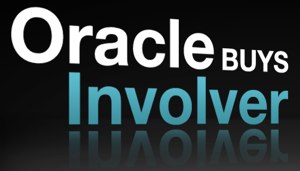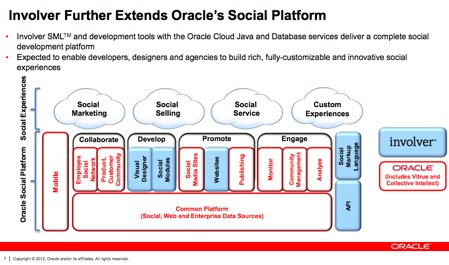This, my friends, is what a truly colossal PR/social media train wreck looks like…

… and the comment count will undoubtedly be higher by the time you all look at the Facebook page.
If you’ve missed the story that’s all over the news, the Susan G. Komen For The Cure organization has got itself into a PR nightmare. Most of us in the USA and many parts of the world are probably aware of the Komen organization. It is a major force in efforts to raise funds for research into a cure for breast cancer and has made the now ubiquitous “pink ribbon” a powerful symbol. My wife and I have donated to Komen and run in multiple Komen-sponsored races and walks, even before my wife wound up fighting breast cancer.
Today, though, the Komen organization is in a great bit of trouble.
Last year, per the company’s story, in an effort to be more accountable and be sure their dollars were making the most impact, they tightened up their eligibility requirements for future grants.
This, in and of itself, is a good thing. Charitable organizations should look at how to be more accountable to their donors and ensure their dollars are going the farthest.
Back in December, Komen notified its longtime partner Planned Parenthood that under the new guidelines they would no longer be able to receive new grants, apparently because Planned Parenthood is under investigation by the US Congress related to its use of federal funds.
Again, one can potentially see the point. If an organization is being investigated about its funding, other donors to that org may want to take a “wait and see” approach until the investigation is resolved.
And if the organization in question were not Planned Parenthood this might all have all been seen as proper fiduciary responsibility on the part of the Komen organization.
Playing With Fire
However, in our hyper-politicized age, and in an election year, an organization like Planned Parenthood is a insanely hot lightning rod. The mere mention of the name can send some crowds into a frenzy.
Anything involving Planned Parenthood is playing with fire.
And so when the AP broke the news on Tuesday, the predictable media frenzy started. Planned Parenthood blamed anti-abortion foes and right-wing groups and was, understandably, quick to stoke the flames and use the issue as a fund-raising tool. Rather smart on their part and last I heard they had already raised nearly as much in donations than Komen granted to Planned Parenthood in 2011.
Komen’s position was not helped by the fact that they recently hired a vice president who previously stated her strong opposition to Planned Parenthood. In fact, she clearly stated in a run for Governor of Georgia that if elected she would eliminate state grants to Planned Parenthood.
More wood for the fire.
And then…
… the Internet took over.
A zillion tweets… more and more and more… thousands upon thousands of Facebook comments, posts and shares… more in Google+… more in blog posts… spreading like wildfire all around the globe…
The Response?
And in the face of this insane maelstrom, the Komen organization did…
NOTHING!
As Kivi Leroux Miller writes in her excellent post, “The Accidental Rebranding of Komen for the Cure,” the Komen crew was missing in action while all the action was going down.
Komen was not active on their Twitter account nor on their Facebook page…. nor anywhere.
They lost control of the narrative.
They let the story be defined by the media, by pro-choice activists, by critics of Komen, by supporters of Planned Parenthood, by everyone else but them.
Many hours later Komen issued a statement in corporate-speak about how their changes had been “mischaracterized” and that “our grant-making decisions are not about politics”. They subsequently released a video from founder and CEO Nancy Brinker that I thought at first might be an honest outreach to people who were so upset… but turned out merely to be a visual recitation of that same corporate-speak statement. Similarly, they posted a few tweets and Facebook updates… but just again pointing to their statement or emphasizing key points.
Meanwhile, people all across the Internet are talking about ceasing all their donations to Komen. Sure, some who support the decision are saying that they are glad they can finally donate to Komen, but they are far outweighed by those who are critical of the change.
Komen’s Facebook page is filling up with such wall posts and there is a constant stream of tweets directed at them.
They are, right now, pretty thoroughly screwed.
Now What?
So what does Komen do now? They have completely lost any control of the story – and the stories circulating on the Internet are now feeding upon themselves. How do you even remotely start to unmake this mess?
Given that I try to first believe “Never assume malice where stupidity is a far better explanation,” I would personally like to believe that the Komen folks are sincere, that they made some changes to their grant-making guidelines and that this whole debacle has caught them unawares. I’d like to believe that, although admittedly the political angle does make that hard.
If they are sincere, though, were they really so clueless from a PR point of view that they didn’t think about the political ramifications of their decision? Or if they did, why were they not prepared for the reaction?
As Kivi Leroux Miller writes in her post:
It’s a no-win situation that could have been avoided had they developed a communications strategy on this decision at the start. Sure, they would have still angered many of their supporters, but I believe they could have avoided this huge rift had they communicated upfront, and honestly, about the decision. They should have released it, instead of letting Planned Parenthood own the messaging.
Exactly.
On something as potentially contentious as this, they should have gone out first, rather than letting the AP and Planned Parenthood define the story.
Or, in the event of the AP story blowing up as it did, Komen should have had a plan to get out there and explain their decision in clearer terms.
Instead, as Kavi Leroux Miller writes:
Yet it appears that Komen wants to desperately pretend that this decision is being made in some completely different context. By not responding at all to the overwhelming negativity being thrown their way, and continuing to pretend that this has nothing to do with a red-hot social issue, they are alienating a big part of their constituency.
It seems like they are hoping this will just blow over. It won’t.
Hiding away won’t help them.
While they’ve spent 30 years building up the organization, this past 30 hours may go far in destroying all they’ve built up.
Their only chance now may be to come out with more information about the changes to their grant-making guidelines, to explain more about why Planned Parenthood no longer qualifies, to explain what other organizations will no longer be able to receive funding.
It may be too late.
Are You Ready?
All of which begs the question…
are you ready for something like this to happen to your organization?
If a media story runs with comments critical of your organization, are you ready to deal with the resulting social media firestorm? What would you suggest for Komen to do from a communications point of view?
The story is still unfolding, but I think this one will definitely be an example for the textbooks in – so far – what not to do…
Image credits: learnscope and jill_carlson on Flickr
If you found this post interesting or useful, please consider either:

 This morning a conservative friend posted to Facebook a link about how Mitt Romney had a very positive message and was a decent person, in contrast to President Obama who was extremely negative, full of lies and was treating half the country with contempt.
This morning a conservative friend posted to Facebook a link about how Mitt Romney had a very positive message and was a decent person, in contrast to President Obama who was extremely negative, full of lies and was treating half the country with contempt.




